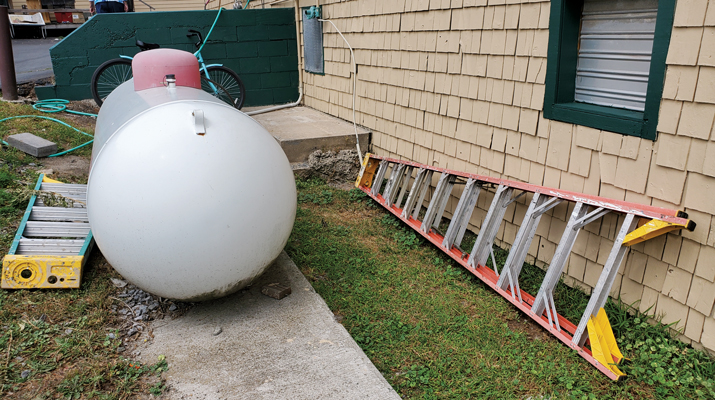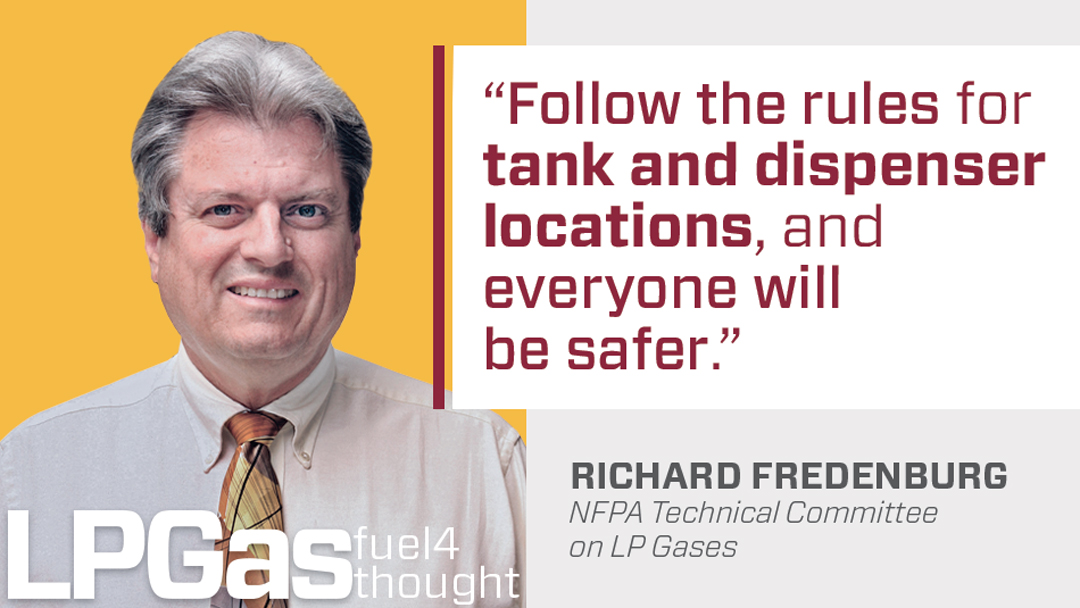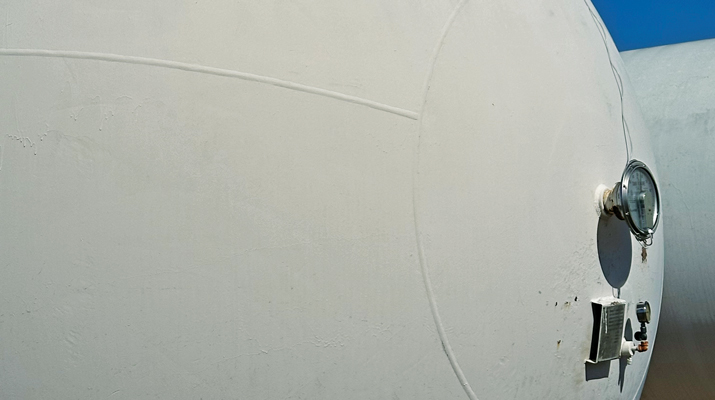Avoid common code violations when installing propane containers

This propane tank is placed too closely to a retail storage and services building. (Photo by Richard Fredenburg)
I see it at the coast. I see it at high-traffic tourist attractions. I see it at high-density resort areas. And I see it at congested convenience stores, hardware stores and gasoline service stations.
“It” is propane containers and dispensers installed too closely to buildings, property lines and more.
The NFPA 58 LP gas code is very specific in chapter 6 about separation requirements for containers and dispensers. I won’t go into the many requirements based on container capacity and type of exposure here, but you should be familiar with the basics for installing and servicing containers.
I believe that many separation violations occur because of customer requests. They want the container at a certain place in the yard, either out of sight or out of the way. This may put the container too close to the house, outbuilding or property line.
Customers may want a container hidden by a wall that makes it inaccessible to applying cooling water. Or it could be too close to a doorway, air conditioner, heat pack or crawl space vent. You must not yield to those requests if it causes separation violations.
Consult the code
Safety is our main concern with tank placement. A container too close to a source of ignition can put the driver at risk when using the bleed valve or when disconnecting the hose. A container too close to a building can be a risk for or at risk from the building, should either one be aflame. The potential risks are plentiful.
Look at these parts of the 2020 edition of the LP gas code to see some of the requirements:
- Table 6.4.1.1 (containers to buildings and property lines).
- Table 6.4.4.3 (relief valve to building openings and more).
- Table 6.7.2.1 (liquid transfer point to various exposures).
- Table 6.25.2.2, various parts (separation of release points from electrical exposures).
- Section 6.27 (dispenser installation).
- Section 7.2.3 (arrangement and operation of transfer systems).
Violating these requirements puts employees and consumers at heightened risk.
Also, think about how events can unfold after an incident where requirements were not followed. Your liability may increase if it’s shown that you allowed installation or continued use of containers or transfer systems not complying with the code. But I’m speaking above my pay grade.
The 500-gallon tank in the photo is about 5 ft. from the storage and services building for a row of retail stores catering to tourists. This is a difficult installation. The strip of grass is narrow and bounded by the building on one side and a busy, paved driveway on the other. Providing the required 10 ft. of separation would put the tank in the driveway, hindering traffic. To their credit, bollards are installed to the left, just out of the picture.
The other sides of the building were even more problematic. There is no place within the confines of the paved driveway or parking lot to put this tank unless they take a parking space.
Many years ago, I saw in Key West, Florida, a 1,000-gallon tank sitting in a space only slightly larger than the tank and surrounded by buildings. They had to haul the filler hose through one of the houses. I think it was set up to serve multiple dwellings. Think of the problems the driver would have if he had to get away from the tank in those tight confines.
Some sites just aren’t appropriate for dispensers. Tight gasoline stations with multiple fuel pump islands, the main service building, a storage shed or two and a large trash dumpster probably do not have a place far enough from everything to meet the separation rules. Putting a dispenser there raises the risk level for everyone on the site.
Follow the rules for tank and dispenser locations, and everyone will be safer.
Read more: Avoiding propane tank placement issues
Richard Fredenburg is an LP gas engineer at the North Carolina Department of Agriculture and Consumer Services, Standards Division. He is also a member of NFPA’s Technical Committee on LP Gases. Contact him at richard.fredenburg@ncagr.gov or 984-236-4752.
NOTE: The opinions and viewpoints expressed herein are solely the author’s and should in no way be interpreted as those of LP Gas magazine or any of its staff members.

















